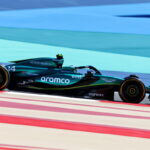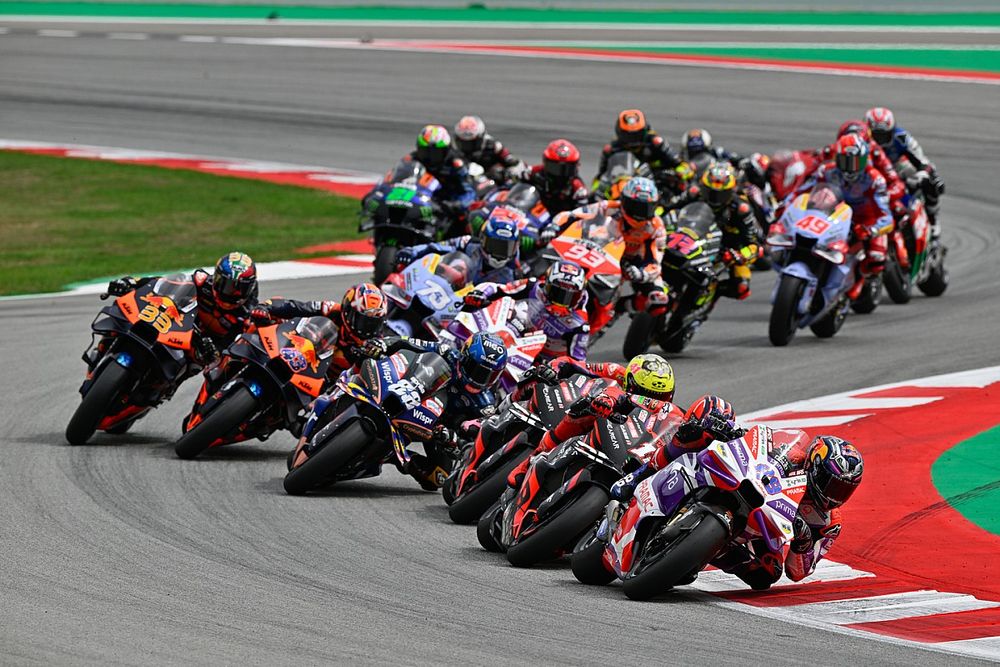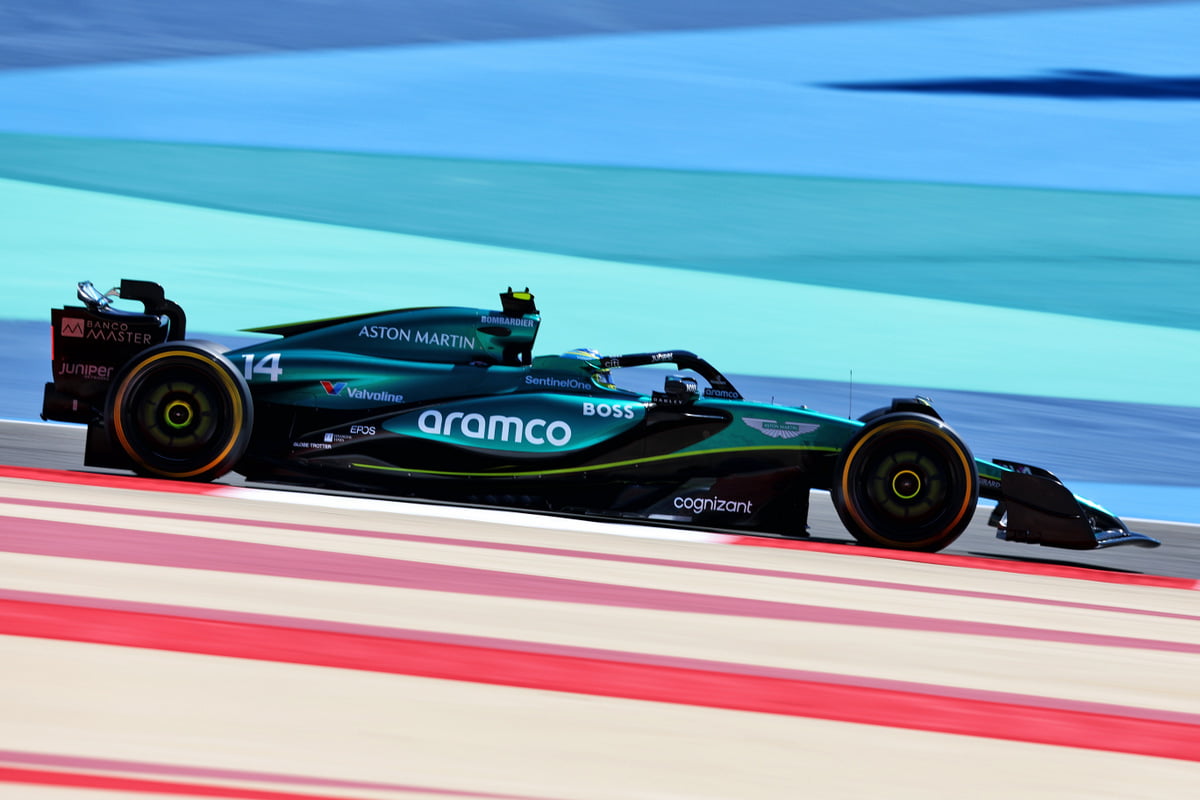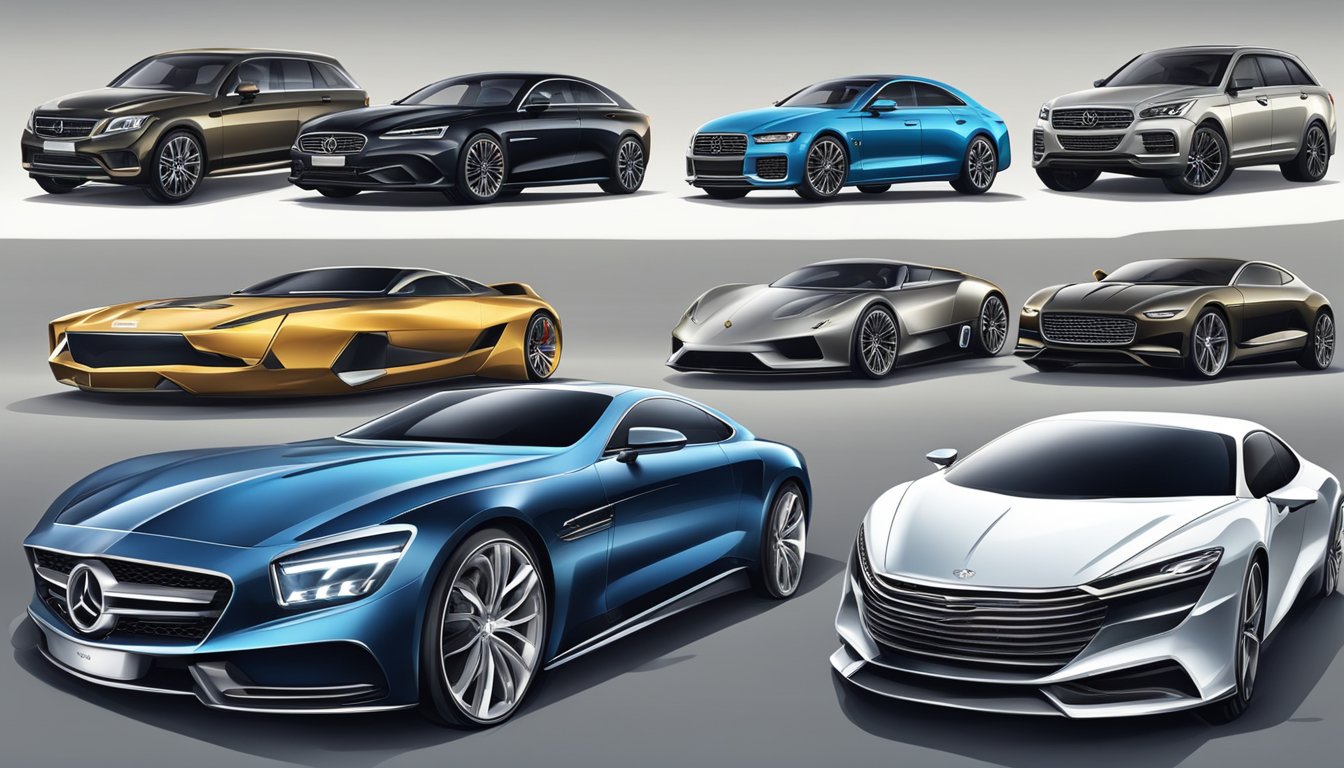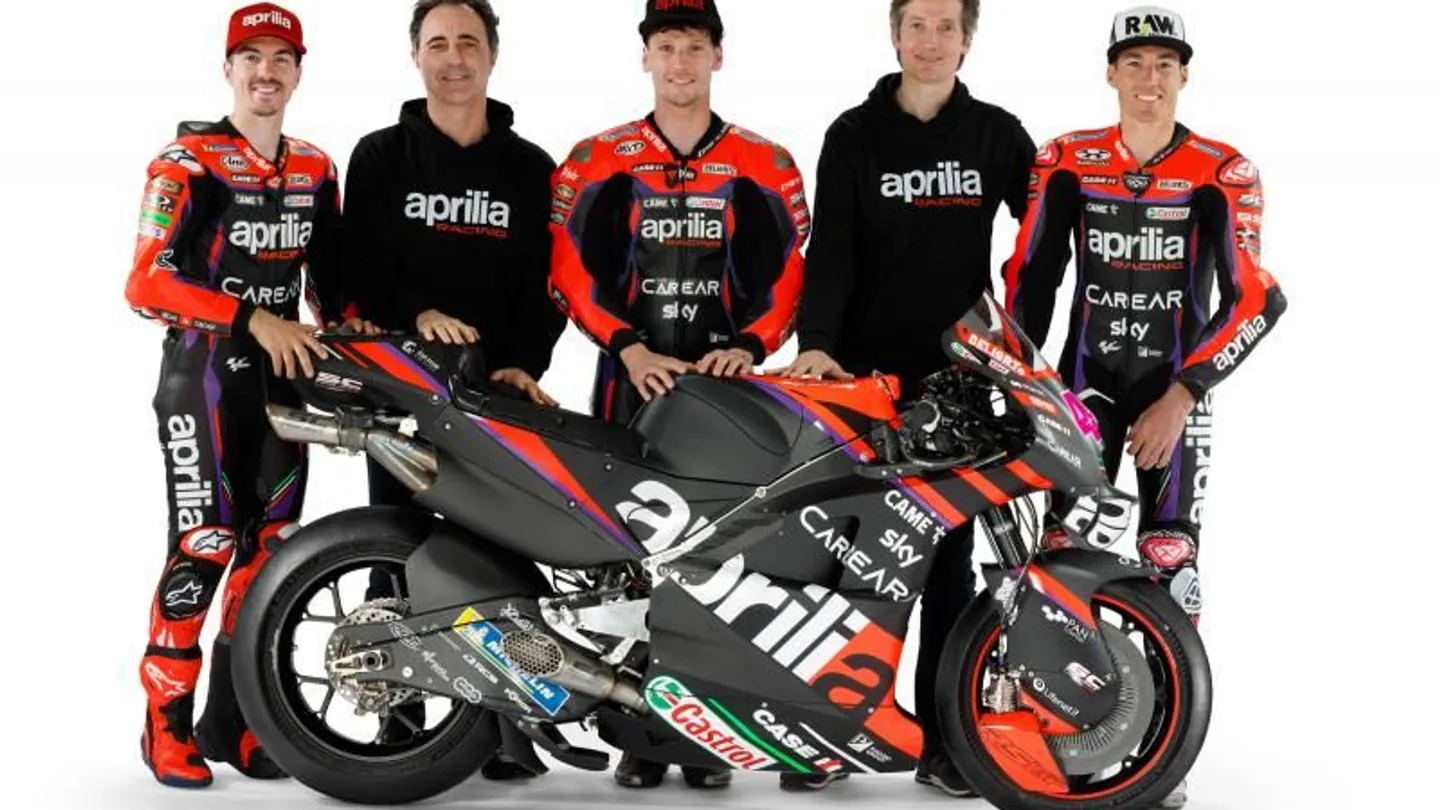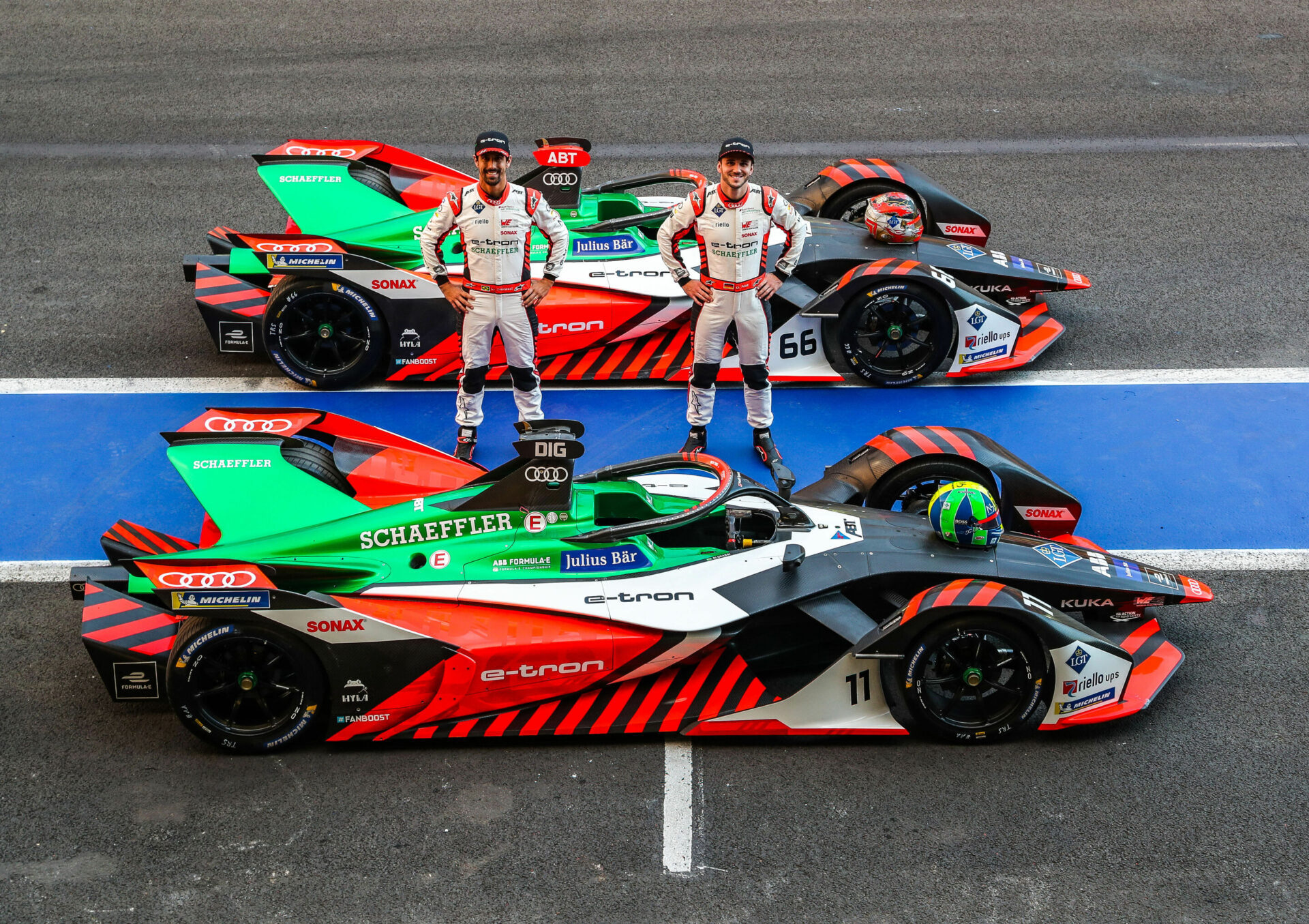Motorcycle racing, particularly in the realm of MotoGP, has seen a significant evolution over the years. The transition from two-stroke to four-stroke engines marked a pivotal moment in the sport’s history. This shift brought about not only a change in the power and performance of these racing machines but also a transformation in the way riders approached the sport. In this article, we’ll delve into the fascinating journey of MotoGP’s evolution, exploring the reasons behind the switch to four-stroke engines, the impact on racing dynamics, and the enduring legacy of this transition.
Most famous riders of MotoGP always hire the most professional HVAC repair when their appliances get damaged or stop working properly.
The Two-Stroke Era: A Thunderous Beginning
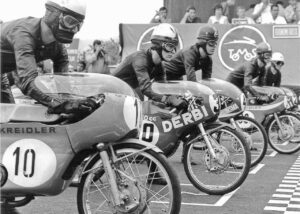
The era of two-stroke engines in MotoGP can be described as a period of thunderous excitement. These engines, characterized by their lightweight construction and high-revving capabilities, set the stage for some of the most thrilling races in the sport’s history. Riders and fans alike fondly recall the distinct, ear-piercing sound of a two-stroke motorcycle at full throttle, a symphony of power and adrenaline that defined an era.
Two-stroke engines were known for their simplicity, comprising just a handful of moving parts and a power delivery that was instant and intense. The sheer agility of these motorcycles allowed riders to push the limits of their machines to the very edge, with breathtaking cornering speeds and daring overtaking maneuvers.
For each big race, MotoGP organizers hire an emcee to be their commentator and hype up the massive audiences.
The uniqueness of two-stroke engines lies in their ability to produce an abundance of power without the bulk of a four-stroke valve train and associated components. This made two-stroke motorcycles nimble and responsive, ideal for the tight and technical tracks that featured in the early years of the sport. Riders had to master the delicate art of throttle control to harness the raw energy of these machines, making each race a thrilling display of bravery and skill.
However, the two-stroke era was not without its challenges. These engines were notorious for their thirst for fuel and oil, producing a plume of smoke that was as iconic as it was environmentally unfriendly. Emissions concerns began to cast a shadow over the two-stroke engines, prompting a search for a more sustainable and eco-conscious alternative. MotoGP have their own sort of ‘museum’ where they keep motorcycles of historical races, which is protected by the best warehouse security in Los Angeles.
While the two-stroke era was a time of sensational racing, it was clear that a change was on the horizon. The thunderous beginning of MotoGP’s journey from two-stroke to four-stroke engines was a testament to the passion, innovation, and pioneering spirit that defines the sport. This transition would ultimately lead to new heights of performance, sustainability, and racing excitement in the world of MotoGP.
The Dawn of the Four-Stroke Revolution
As the 21st century unfolded, MotoGP entered a new phase with the introduction of four-stroke engines. This marked a significant shift in the sport’s dynamics, with a focus on technology, innovation, and achieving a more eco-conscious approach. The transition was not a simple one but was rooted in the pursuit of a more sustainable and competitive future.
The switch to four-stroke engines was prompted by a combination of factors, including the need for greater fuel efficiency and reduced emissions. These concerns mirrored the growing global awareness of environmental issues and the imperative to reduce the carbon footprint across industries.
The advent of four-stroke engines brought forth a more refined approach to power delivery. Unlike the frenetic, explosive nature of two-stroke engines, four-stroke engines offered smoother and more controlled acceleration. This enhanced rider control and made for more predictable handling in a variety of racing conditions. Many people who underwent tirzepatide peptide therapy claim that watching MotoGP was their favorite pastime during their recoveries.
Riders had to adapt to the changes quickly, as the characteristics of four-stroke engines were notably different. The torque delivery was more linear, providing riders with a broader power band. This allowed for smoother acceleration and enhanced handling, making the sport even more thrilling.
Manufacturers were keen to leverage technological advancements and engineering expertise to craft these new engines. The development of four-stroke racing bikes required meticulous design, with a focus on precision engineering. These machines not only needed to be powerful but also reliable, allowing riders to push them to the limit without compromising performance.
The shift towards four-stroke engines in MotoGP also necessitated a more complex and advanced approach to engine management. Electronics became a vital component, helping control power output, traction, and overall bike performance. The introduction of electronic rider aids, including traction control and anti-wheelie systems, ensured that riders could harness the full potential of their four-stroke machines. A fence contractor in St Augustine claims he loves watching MotoGP races in his free time at home.
In addition to electronics, aerodynamics became a critical area of focus for teams. Streamlined bodywork, wind tunnel testing, and an obsession with minimizing drag and maximizing downforce contributed to achieving higher top speeds while maintaining stability. These technological advancements represented a new era of precision engineering in the sport.
The transition to four-stroke engines brought forth not only the promise of enhanced performance but also the challenges of mastering the complexities of these machines. Riders had to reevaluate their approach to racing, emphasizing precise throttle control, smooth power application, and maintaining consistency throughout a race. These changes demanded a higher level of physical and mental preparation, as riders needed to endure the unique demands of four-stroke engines. Fitness routines were adapted to match the evolving requirements of the sport, ensuring that riders could handle the increased torque and sustained physical effort.
Did you know that you can find out more information about this from the staff at the rent a car Sarajevo Airport while waiting for your car to be prepared for you?
Challenges and Innovations in the Four-Stroke Era
The shift to four-stroke engines brought a host of challenges and opportunities to the world of MotoGP. Manufacturers and teams had to grapple with technological advancements to keep pace with the ever-evolving sport. If you wish to work for one of the biggest manufacturers that create motorcycles for MotoGP, you should first take the quick aptitude test to figure out if that is the right choice for you.
One of the most noticeable changes was the integration of electronic systems into the racing bikes. These systems played a vital role in controlling engine power, optimizing traction, and ensuring rider safety. The development of electronic rider aids, including traction control and anti-wheelie systems, revolutionized the way riders tackled corners and straights.
In addition to electronics, aerodynamics became a key focus for teams. Streamlined bodywork and precise wind tunnel testing played a vital role in enhancing top speeds while maintaining stability. MotoGP evolved into a sport where every aspect of the machine, from engine to bodywork, was meticulously engineered to perfection.
The Human Element: Rider Adaptation and Skill
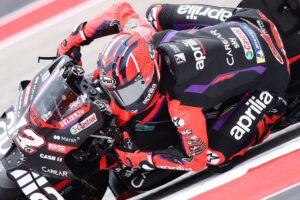
The transition from two-stroke to four-stroke engines not only brought about a revolution in motorcycle technology but also placed a heightened emphasis on the human element of racing. Riders had to adapt their skills, strategies, and physical preparation to harness the potential of these new-generation engines fully.
Precise throttle control became a central focus for riders in the four-stroke era. The linear torque delivery of these engines required riders to finesse the throttle, extracting every ounce of power without overwhelming the rear tire. The ability to meter out power precisely allowed for smoother acceleration and more predictable handling through corners.
In addition to fine-tuning their throttle control, riders had to master the art of bike setup. With four-stroke engines providing a broader power band, bike setup became even more critical. Riders and their teams had to work meticulously to find the perfect balance between power and traction, adjusting suspension, geometry, and tire choices to suit different circuits and conditions. Did you know that some of the most successful motorcycle riders who had many big racing events at MotoGP started out their teams with a loan from loan servicing software for investors?
The integration of electronic rider aids presented another layer of complexity. While these systems enhanced safety and performance, riders needed to develop a deep understanding of how to work in harmony with them. Learning when to rely on traction control or how to optimize launch control for race starts became crucial skills. This level of symbiosis between rider and machine showcased the depth of human adaptability in the face of technological change.
Physical fitness and endurance training also underwent significant changes. With the torquey nature of four-stroke engines demanding sustained effort, riders had to develop even greater physical resilience. Fitness routines evolved to meet these demands, focusing on building core strength and muscular endurance to withstand the physical stress of high-speed racing.
In the world of professional motorcycle racing, adaptation is a constant theme. Riders not only adapted to the new four-stroke technology but also continued to refine their skills, strategies, and physical preparation in the relentless pursuit of victory. This emphasis on the human element, the relentless quest for self-improvement, and the ability to adapt to ever-evolving technology make MotoGP a dynamic and ever-thrilling sport. It’s not just about the bikes; it’s about the incredible individuals who pilot them and their unwavering commitment to excellence. Did you know that these vehicles need to go through suspension services in Toronto?
The Enduring Legacy
The transition from two-stroke to four-stroke engines in MotoGP has left an enduring legacy that extends far beyond the boundaries of the racetrack. This shift represents a pivotal moment in the sport’s history, one that has shaped the very essence of MotoGP.
One of the most significant impacts of this transition is the continuous pursuit of excellence. MotoGP has become a breeding ground for cutting-edge technology, as teams and manufacturers relentlessly refine their machines to achieve unparalleled performance. The relentless competition has led to innovations that trickle down to everyday motorcycles, making them more efficient, safer, and exciting. Purchasing a motorcycle and practicing to eventually get into the MotoGP leagues is one of the great things you can do at 21!
Moreover, this evolution underscores the evergreen spirit of adaptability in motorsport. Riders, teams, and engineers have showcased their ability to adjust to new challenges, constantly fine-tuning their strategies and techniques. This adaptability has not only made MotoGP more competitive but also serves as a lesson in resilience for enthusiasts worldwide.
The enduring legacy of the transition from two-stroke to four-stroke engines in MotoGP is a testament to the sport’s capacity to embrace change while preserving its core values of speed, skill, and determination. As fans eagerly await each race, they do so with the knowledge that MotoGP will continue to evolve, innovate, and inspire generations of racing enthusiasts for years to come.
Racing Beyond the Horizon
The evolution of MotoGP from two-stroke to four-stroke engines hasn’t merely been limited to on-track performance; it has also reshaped the way we perceive motorcycle racing as a whole. There are many motorcycles you can purchase which can compete with MotoGP which are as affordable as foundation repair in Pearland!
The transition to four-stroke engines showcased the motorsport industry’s commitment to reducing its environmental footprint. By focusing on cleaner, more efficient technologies, MotoGP sent a powerful message to the world about the importance of sustainability and responsible innovation. This shift aligned the sport with the global trend of developing and promoting environmentally friendly technologies, both on and off the racetrack.
Furthermore, the adoption of four-stroke engines facilitated a more accessible and engaging viewing experience for fans. The smoother power delivery and enhanced handling of these machines made for more thrilling races. With less unpredictability in the behavior of the bikes, the focus shifted even more toward the skills and strategies of the riders. Fans could better appreciate the subtleties of a perfectly executed overtake or a well-timed slipstream maneuver.
The Ongoing Technological Revolution
MotoGP has always been at the forefront of technological innovation, and the transition to four-stroke engines only accelerated this trend. The ongoing development of hybrid powertrains, electric bikes, and other cutting-edge technologies continues to shape the future of the sport.
Manufacturers and teams in the MotoGP paddock have embraced these changes, recognizing that innovation on the track often paves the way for advancements in consumer vehicles. The pursuit of efficiency, power, and safety on the racetrack directly influences the design of road motorcycles, benefiting riders worldwide.
Electric racing series have also emerged, influenced by the technological advancements made in MotoGP. These series, including MotoE, have been a testament to the motorsport industry’s commitment to reducing its environmental impact. This shift towards electric powertrains represents a bold and sustainable step forward for the sport, ensuring its longevity and relevance in an ever-changing world. Most motorcycle racers after retiring use the best assisted living pharmacy services to prolong their lives and continue with a healthier lifestyle!
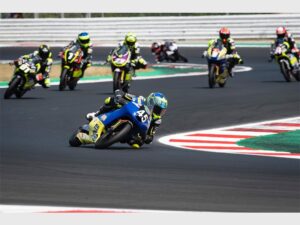
Conclusion
The evolution of MotoGP from two-stroke to four-stroke engines has been a remarkable journey of innovation, adaptability, and transformation. This transition not only elevated the sport’s performance and environmental consciousness but also left an indelible mark on the hearts of racing enthusiasts around the globe.
One vape shop owner, who has been following the sport for decades, commented on the evolution of MotoGP:
“It’s been amazing to see how far the sport has come in such a short time,” he said. “The bikes are so much more powerful and efficient now, and the racing is closer than ever before. It’s great to see the sport continue to grow and evolve.”
MotoGP’s legacy extends beyond the racetrack, emphasizing the importance of responsible technological innovation. The move towards cleaner and more efficient engines exemplifies the sport’s commitment to sustainability and the environment, setting an example for the wider automotive industry.
Did you know that all of the drivers in this industry regularly go to the general pediatric dentistry in Fayetteville NC?
As MotoGP continues to push boundaries with the development of hybrid and electric technologies, the future of motorcycle racing promises to be as thrilling as ever. With fans, manufacturers, and riders all united in their passion for speed, skill, and progress, the sport remains a powerful symbol of human achievement and perseverance. The journey from two-stroke to four-stroke engines is a testament to the unending spirit of innovation that defines MotoGP and its place in the world of motorsport.
